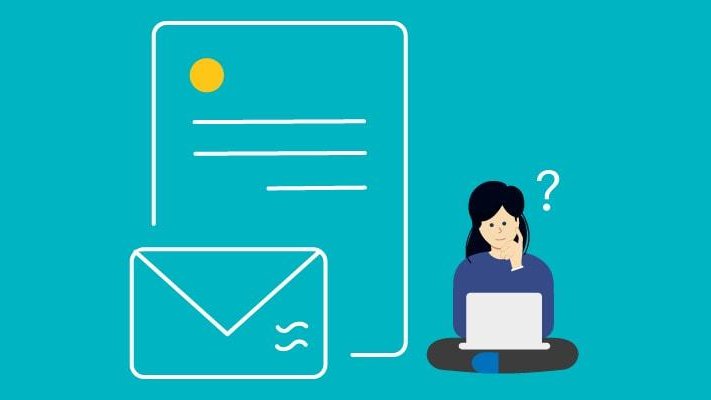What is the difference between an invoice vs a statement? Invoices and statements can sometimes seem identical. If you’re a small business owner, your bookkeeping staff has sent and received both types of documents many times, but perhaps never really considered the difference between them. And if you are a small business owner, you truly do need to know what those differences are.
Invoice vs Statement
Let’s examine the definitions of each so we can highlight the main differences between them. We’ll also go over some other documents you need to be aware of and their key differences as well.
Invoices

An invoice, sometimes called a sales invoice, is something a supplier will send to a customer or client that gives a detailed breakdown of items purchased, the cost per item, the total amount of money due, the due date for payments, other payment terms, an invoice number, and other relevant details. They often include the customer name, their contact information, your company’s name, and your contact information, too.
Invoices are invaluable for maintaining your company’s cash flow.
Invoices are legal documents and are only sent when a business is expecting to collect payment. An invoice indicates an obligation on the part of the buyer to pay for products or services rendered.
Once you send an invoice, it becomes part of your accounts receivable until it’s paid. Once it’s paid and your invoice payments are in hand, it’s money in the bank.
Statements

Statements are lists of unpaid invoices that businesses send to customers and clients. A statement is meant to be informative, rather than demanding, and serves as a reminder that payment hasn’t happened yet.
While a statement aims to be as current as possible, in the intervening time between sending the statement and receiving the statement, new charges could be incurred. This is part of the reason why statements don’t carry the same legal weight as invoices.
When sending statements, they should include the following information:
- A list of recent invoices
- The customer’s contact information
- The seller’s contact information
- Statement dates covered
- The current statement date, including the date the statement was prepared
- The statement number
While an invoice serves as a formal request for payment for a sales transaction, a statement is an informal reminder that payment is due.
To find out which customers need to get statements, check your aged accounts for outstanding balances in a given period of time. The statements you send will let customers know the amount due for your products and services.
You may send statements out on a regular basis, unlike invoices, which will be sent immediately when a project is complete and you require payment from the customer.
For example, credit card companies use statements to keep their customers informed about payments owed and payments made for specific time periods. You might never receive an invoice from your credit card company, but you will receive credit card statements on a regular basis.
What About Financial Statements?

As opposed to a statement your business would send to a customer, financial statements are internal documents made for record-keeping purposes. They contain the totality of your financial transactions.
A balance sheet records all of your assets, liabilities, and stockholder equity. You will record your net income by subtracting expenses from revenue and creating a cash flow statement (CFS) to demonstrate your solvency and debt payment ability.
Then What’s a Sales Receipt?

Sales receipts are generally reserved for transactions with immediate payment where there is no opportunity to send an invoice.
Unlike invoices and statements, receipts show that payment has been made already. They will usually contain a breakdown of individual charges, as well as any sales tax and whether a debit or credit card was used for the transaction.
There’s no balance due or due date listed on a sales receipt because the purchase is in the past.
What Are Bills?

Bills are demands for payment but from the perspective of the buyer. When you receive an invoice from someone else, you would classify it as a bill. The same document not only has different purposes depending on who it’s for but it’s known by different names, as well!
How About Purchase Orders?
A purchase order is almost like a reverse invoice. Purchase orders are sent from buyers to vendors. They detail the items or services the buyer would like to purchase, the amounts of each, and the agreed-upon prices.
When the vendor receives the purchase order, they begin the act of fulfilling the order for the buyer. A purchase order obligates payment from the buyer.
Creating Invoices and Statements in Accounting Software
Accounting software, such as QuickBooks, let you create and send invoices and statements easily. Tools for creating these forms make it simple to keep the concepts separated, while integration with your other financial software and bookkeeping records makes the process fast, too.
You don’t even necessarily need to remember which pieces and parts go into an invoice vs statement. The software will give you the fields that you need to fill in, automatically generate an invoice number/statement number, and fill in the customer’s details.
Creating Invoices and Statements Using Templates

If you run a small business or work as a freelancer that doesn’t require extensive accounting software, you can use supplied templates for creating your invoices and statements. They are customizable so that you can find the right fonts, insert your company logo, and input the necessary information.
Templates make sure that invoices and statements aren’t missing any information, so if you’re still doing them by memory, get some templates!
Invoices and Statements Made Easy with HappyAR

We hope this article helped shed light on the key differences in using an invoice vs a statement in your accounts receivable collections process.
HappyAR is a seamless SaaS that quickly and easily boosts your accounts receivables work. We save companies of all sizes thousands of dollars each year by optimizing the speed and efficiency of their collections methods. No more guessing if someone has received an invoice or trusting that it will be paid on time. This is a fully integrated solution that pays for itself over and over each month by preventing defaults and preserving client relationships.
HappyAR is an ever-evolving toolkit that helps optimize your invoice collections process and our solution starts at $0/month and scales up based on your invoice volume. Visit us at www.happyar.com to learn more.

